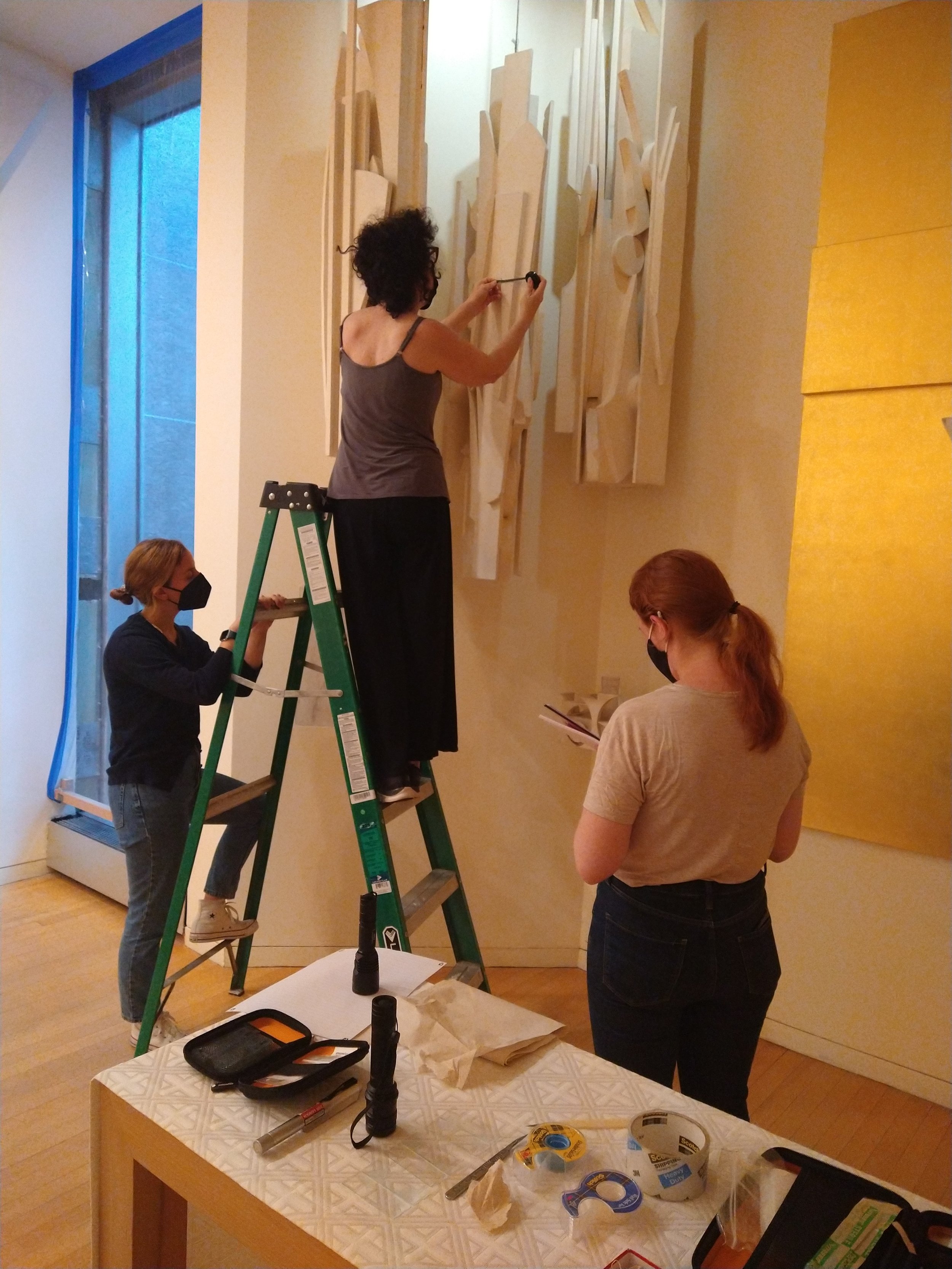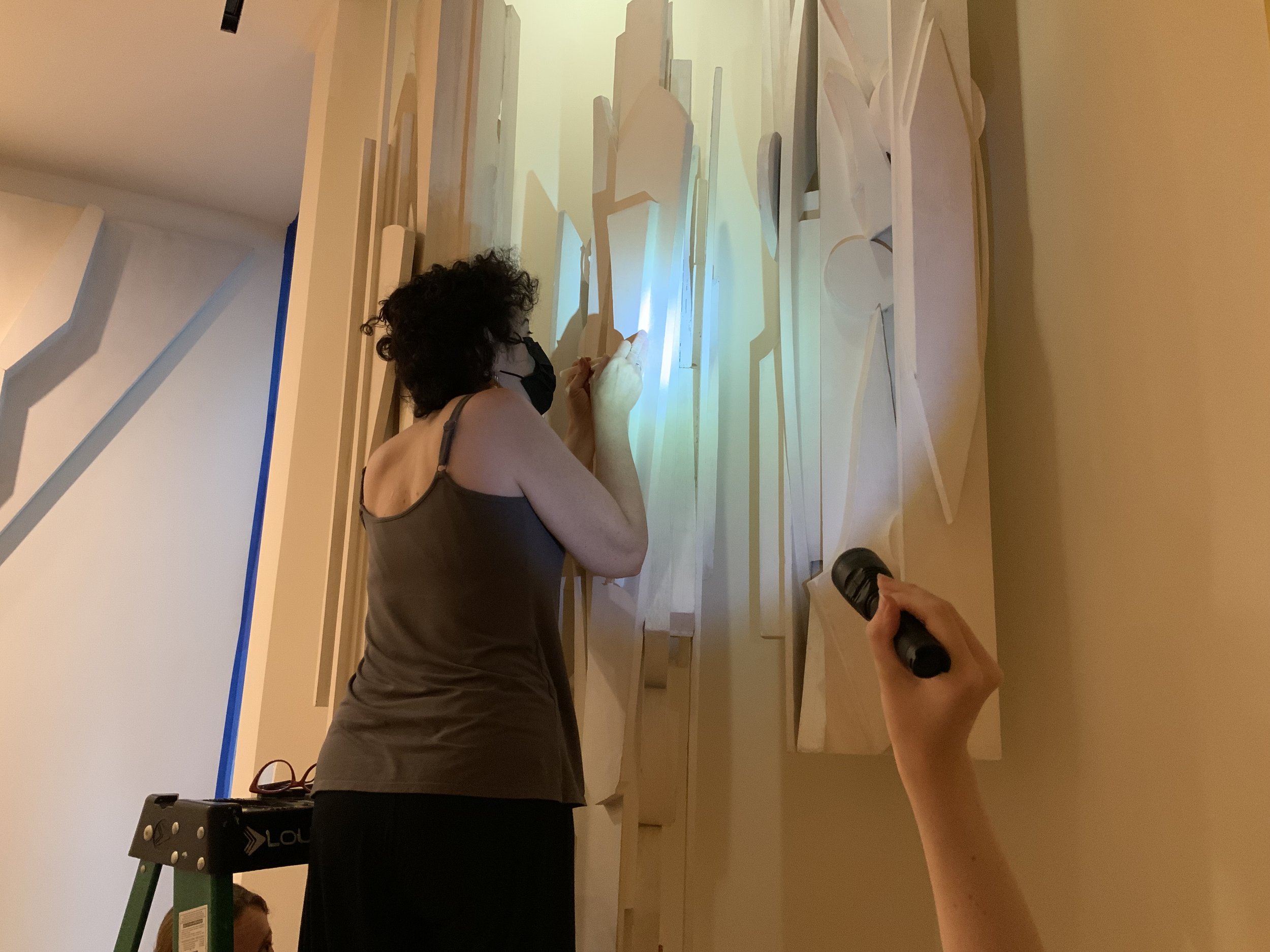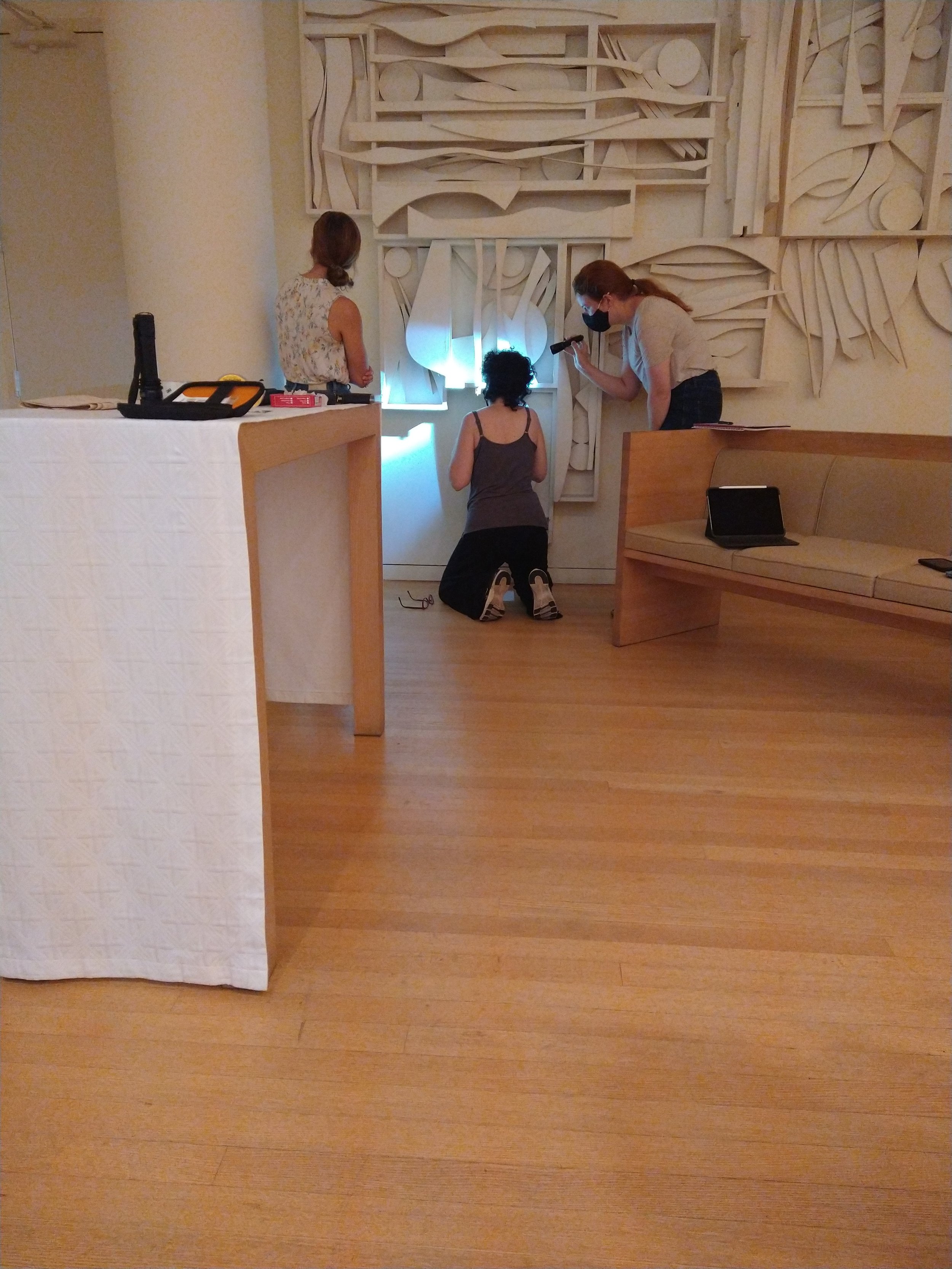Scientific Testing
Progress is well under way toward restoring Nevelson Chapel to what our insurers call “pre-loss condition” prior to the HVAC failure during the COVID19 shutdown. UV photography undertaken in June has given conservators Martha Singer and Jean Dommermuth a roadmap for scientific testing needed to establish a treatment plan.
In mid-July, Dr. Jennifer Mass, president of Scientific Analysis of Fine Art, LLC, was on site with Hannah Duggan and Laura Bergemann to extract samples from each of the sculptural components of Nevelson Chapel according to the Singer/Dommermuth UV photographic map. In many cases these samples are smaller than the period at the end of this sentence. Each is stored between glass slides to prevent contamination. Dr. Mass and her team are now studying these samples in the laboratory using Fourier Transform Infrared Spectroscopy (FTIR) and cross-section microscopy.
These samples could not be in better hands. Dr. Mass received her Ph.D. in inorganic chemistry from Cornell University and was awarded a postdoctoral fellowship at the Sherman Fairchild Center for Objects Conservation at the Metropolitan Museum of Art. She has conducted the scientific study of works of art in museum and academic contexts for over twenty years, and taught this subject in U.S. master’s degree programs in art conservation for her entire career. She is delighted to work on Nevelson Chapel and inform the next stage of its conservation.
While scientific testing was performed prior to initial conservation, this round of testing specifically examines the effects of the humidity spike that occurred because of the HVAC failure. Dr. Mass is examining:
The materials used by Louise Nevelson to construct the Chapel – both wood and paint,
The various overpaints that remain on the sculptures where conservation is in progress, and
The various elements of conservation that were completed prior to the COVID19 shutdown.
Of particular interest is a component of the paints that is actually moving. This material, known in art conservation as an efflorescence, is rising to the top of paint layers and depositing on the surface as tiny white crystals.
In explaining efflorescence, Dr. Mass says “It may be strange to think about different components of the paint in your living room walls, for example, moving around on their own and even crystallizing on the wall surface. But this is a common phenomenon and it is something art conservators observe in historic paints. In the case of acrylics, often this movement can happen within weeks or months after the paint dries, and in the case of oil paints it usually does not happen until several decades have passed. You can think of the process as being similar to the whitish haze or ‘bloom’ that forms on chocolate bars during the summer if you store them for too long (never a problem for me).”
How fast this material moves depends very much on environmental conditions as well as placement within a room. Factors in efflorescence also include histories of storage, movement and display. For example, at the moment, Cross of the Resurrection shows evidence of this efflorescence phenomenon and paint flaking, while the Trinity Columns are in overall good condition.
Why the difference between these two sculptural elements of Nevelson Chapel?
At the time of the HVAC failure, these two sculptural elements were in different states of conservation. Thanks to a gift from the Diamonstein-Spielvogel Foundation, the restoration of the Trinity Columns was nearly 100% complete. Conservation of Cross of the Resurrection was at a mid-point. Further, the Trinity Columns were not in the Chapel at the time of the HVAC failure as they were removed for the installation and implementation of the new HVAC system. Because their planned return was delayed by COVID19, they were not exposed to the humidity spike.
The Trinity Columns are of particular importance in this scientific research since they function as a control group. Comparing their chemical state to the various samples taken from Nevelson Chapel’s other sculptures will allow Dr. Mass to determine whether and how the efflorescence – materials moving to the surface – relates to Nevelson’s original white alkyd paint layer and/or to layers of poly(vinyl alcohol) overpaint that were applied in the 1980s and 1990s. The microscopy will reveal the layer structure of the original and these later finishes.
Scientific testing will also probe the properties of the adhesive applied in the conservation effort that was well underway at the time of the COVID19 shutdown. Here, too, the Trinity Columns serve as an important control group. Whereas due to prolonged exposure to high humidity much of the water-based adhesive failed (causing what conservators call delamination) on the sculptures that were in the Chapel at the time of the HVAC failure, the paint surfaces of the Trinity Columns – re-installed in the Chapel this past spring – remain adhered to the wood substrate. Dr. Mass’ analysis will lead to several viable options for conservators Martha Singer and Jean Dommermuth to consider employing for consolidation of paint surfaces that delaminated as a result of the humidity spike.
Stay tuned for the initial results of this exciting scientific testing — the identity of the mysterious moving paint crystals and the properties of consolidants — and the pathway forward in the ongoing renewal of Nevelson’s masterwork!


